Drosera peltata Thunb.
The epithet, peltata, is derived from the Latin peltatus (armed with a pelta, a crescent-shaped shield) in reference to the shape of its laminae.
New South Wales – coastal central NSW to the Victorian border and adjacent mid-altitude ranges.
Grows in sandstone-based heathland.
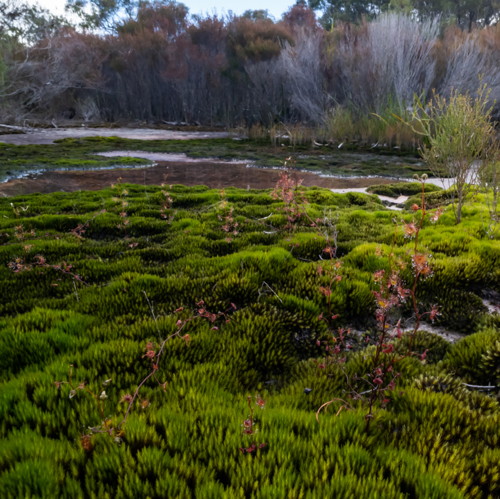
Drosera peltata. Photo © Boaz Ng.
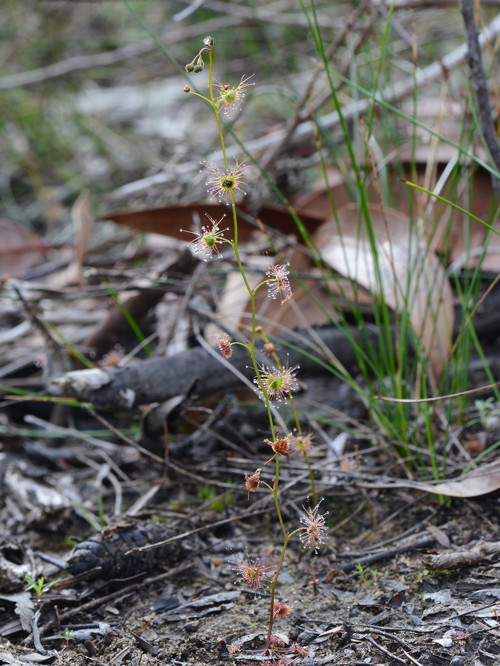
Drosera peltata. Photo © Richard Nunn.
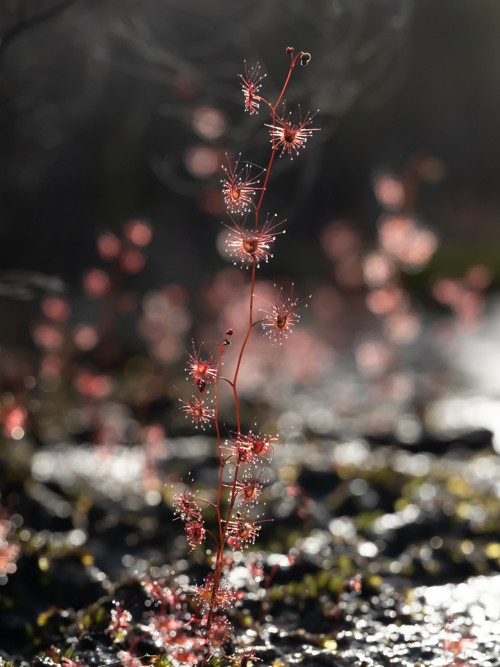
Drosera peltata. Photo © Boaz Ng.
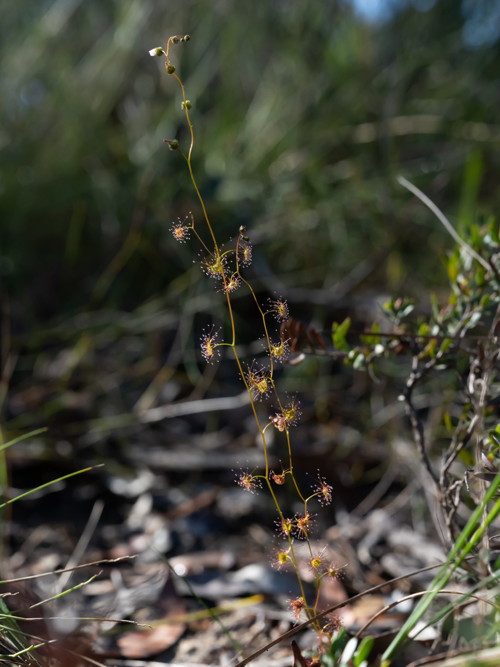
Drosera peltata. Photo © Boaz Ng.
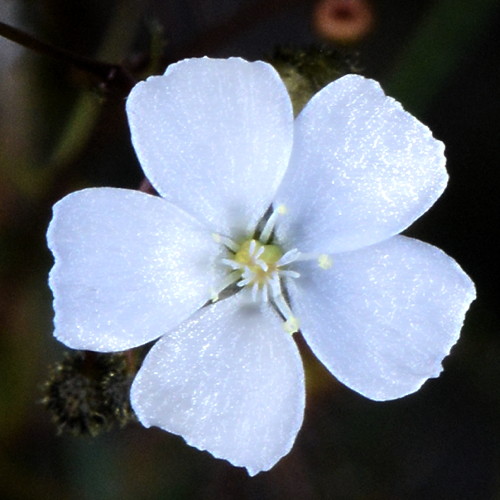
Drosera peltata. Photo © Richard Nunn.
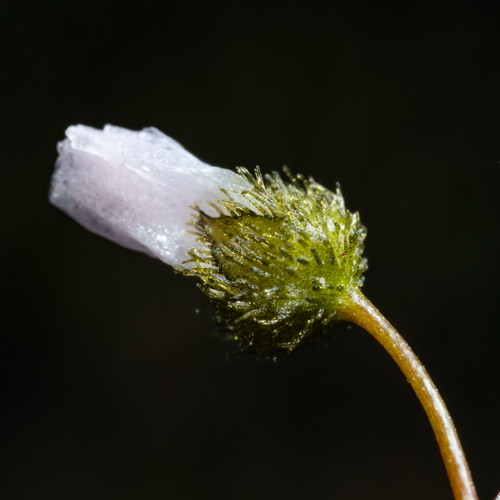
Drosera peltata. Photo © Boaz Ng.
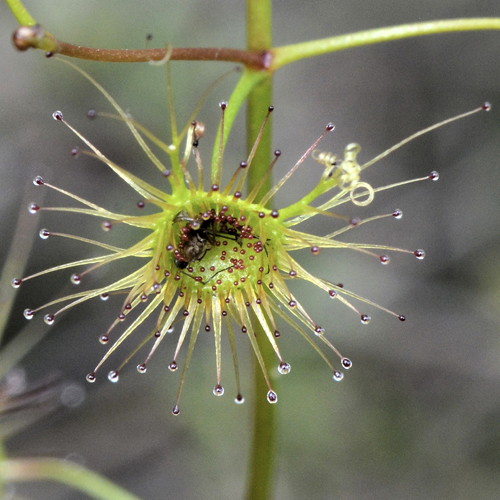
Drosera peltata. Photo © Richard Nunn.
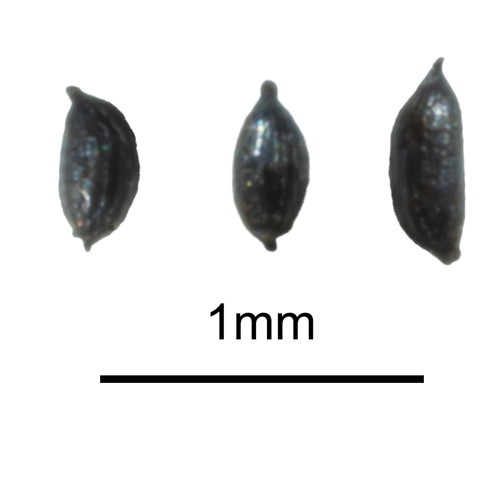
Drosera peltata. Photo © Boaz Ng.
Drosera planchonii Hook.f. ex Planch.
The epithet, planchonii, honours Jules Émile Planchon (1823–1888), a French botanist.
S.A. – Cherry Gardens; Hartley; Sandy Creek; Clarendon; Streaky Bay; Port Julia; Kangaroo Island. TAS. – Swan Port; Ralphs Bay. VIC. – Cranbourne; Langwarrin; Anglesea; Wilson’s Promontory. WA – south-west in the arid eastern regions.
Grows in sand on heathland, and shrubland with a heath understorey.
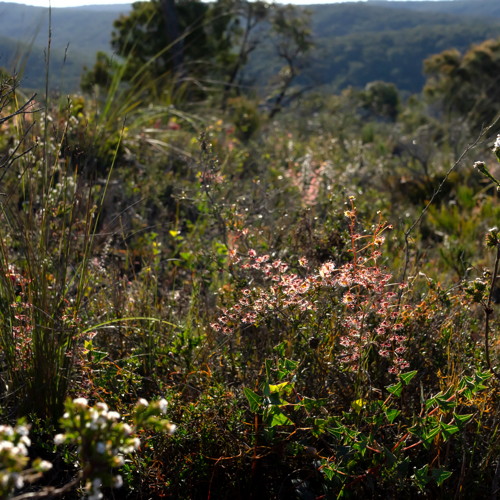
Drosera planchonii. Photo © Boaz Ng.
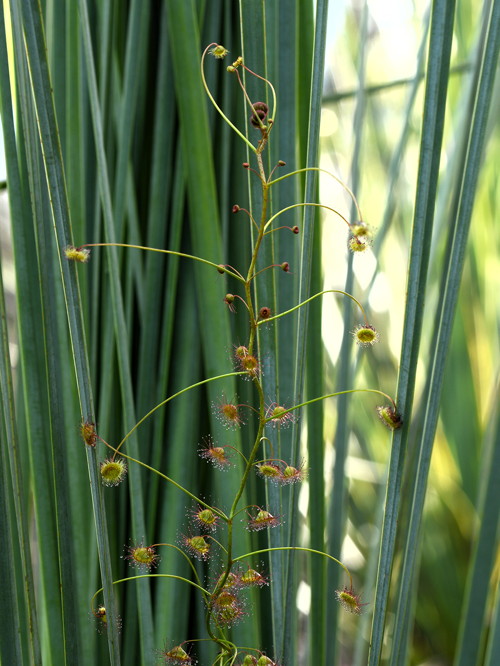
Drosera planchonii. Photo © Richard Nunn.
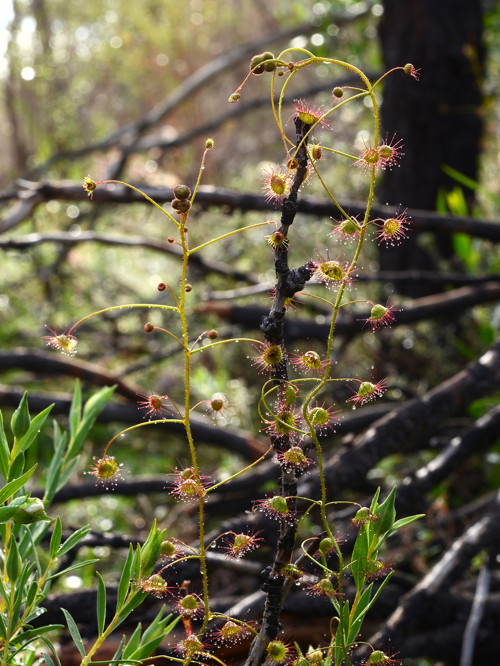
Drosera planchonii. Photo © Richard Nunn.
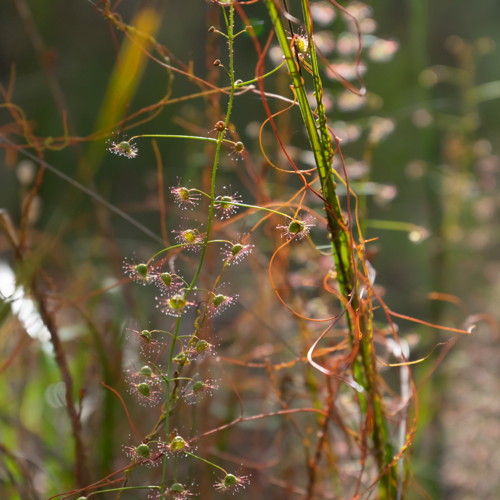
Drosera planchonii. Photo © Boaz Ng.
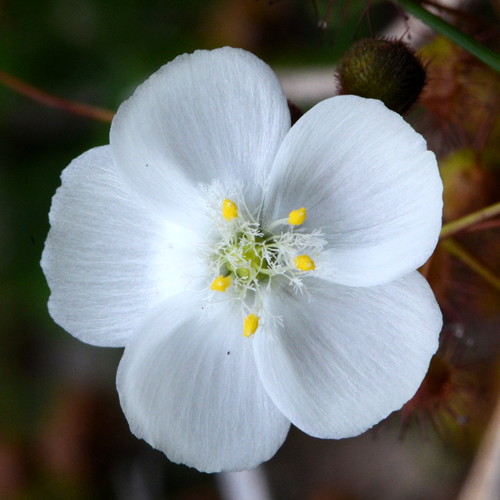
Drosera planchonii. Photo © Richard Nunn.
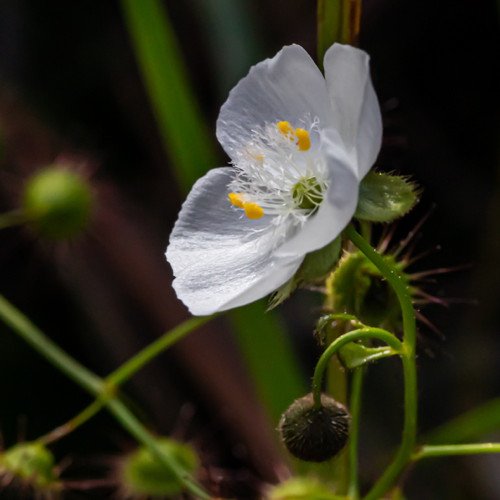
Drosera planchonii. Photo © Boaz Ng.
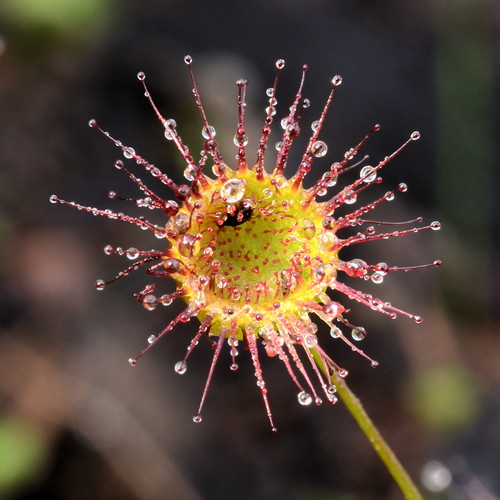
Drosera planchonii. Photo © Richard Nunn.
Drosera platypoda Turcz.
The epithet, platypoda, is from the Greek platys (flat) and podos (foot), in reference to the flat, basal rosette of leaves adpressed to the soil surface.
Western Australia – known to extend from Manjimup southwest to the Scott River area, and east to Cape Riche.
Grows in saturated, winter-wet, grey sandy soils amongst low shrubs on heathland.
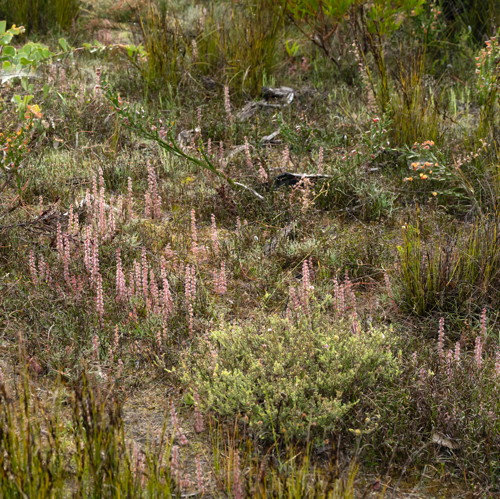
Drosera platypoda. Photo © Boaz Ng.
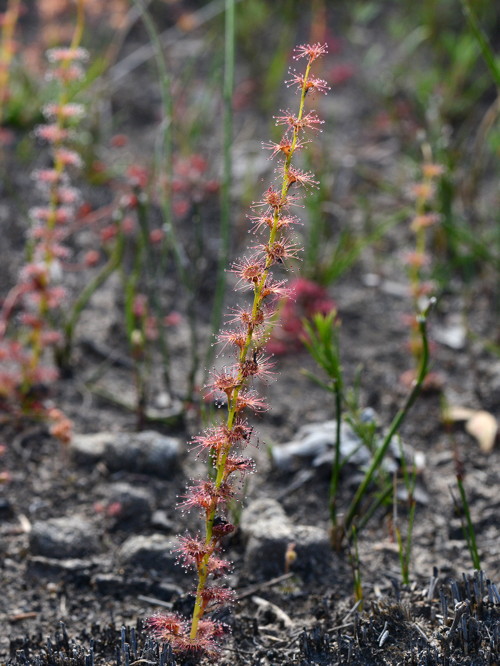
Drosera platypoda. Photo © Richard Nunn.
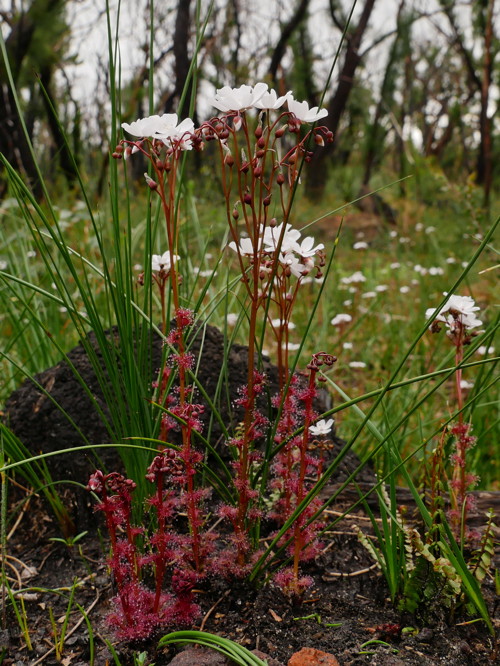
Drosera platypoda. Photo © Thilo Krueger.
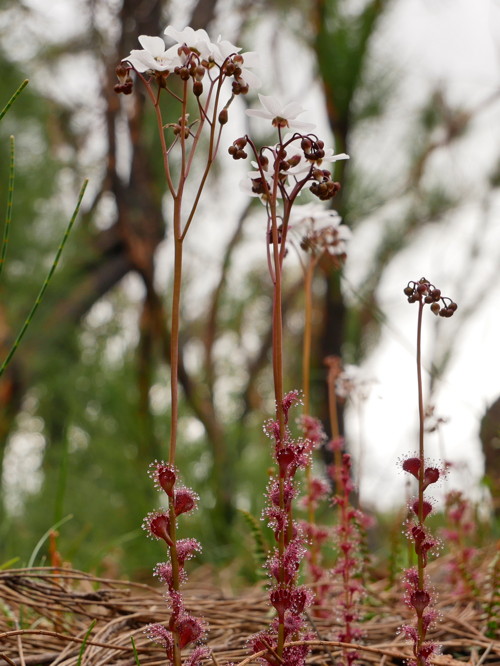
Drosera platypoda. Photo © Thilo Krueger.
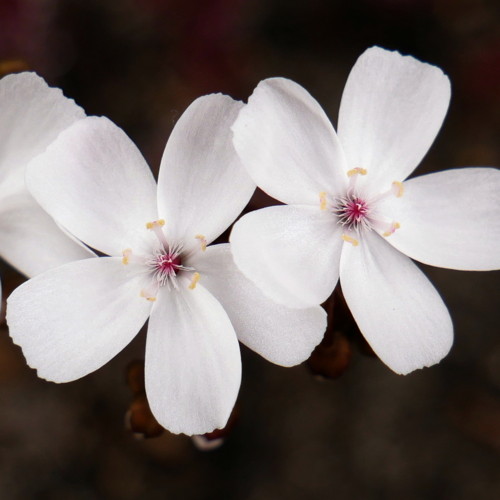
Drosera platypoda. Photo © Thilo Krueger.
Drosera porrecta Lehm.
From the Latin porrectus (extending outwards). It is unclear what the author’s chosen epithet was intended to signify, but it possibly refers to the leafy growths and inflorescences that arise from the basal whorl of leaves and radiate outwards from the main axis.
Western Australia – known to extend from Eneabba and Marchagee south to the Pinjarra area, including the Darling Range southwards to Mt Cooke.
Drosera porrecta grows in well-drained, deep, white or beige sandy soils amongst low shrubs on heathland on the northern sand plains. In the Perth region, it occurs in Banksia woodlands in sandy soils over limestone on the coastal plain; also in sand near winter-wet swamp margins as well as adjoining Jarrah woodland in the Pinjarra region; and in sand mixed with laterite in Jarrah woodlands in the Darling Range.
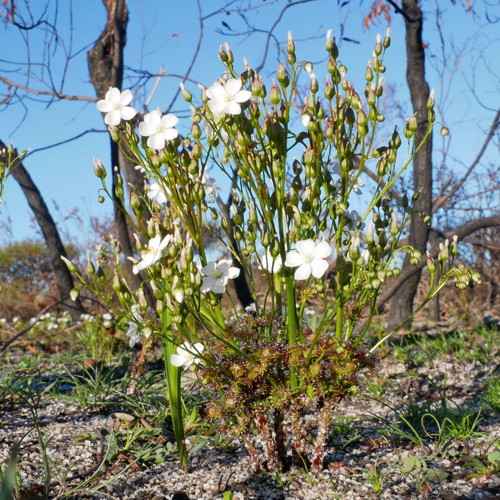
Drosera porrecta. Photo © Thilo Krueger.
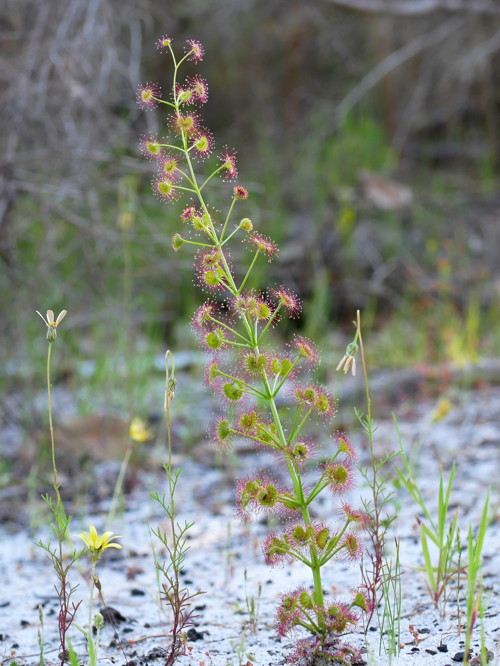
Drosera porrecta. Photo © Thilo Krueger.
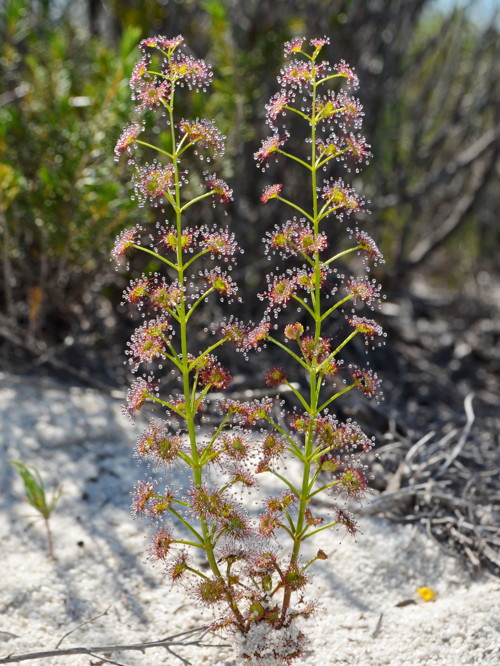
Drosera porrecta. Photo © Thilo Krueger.
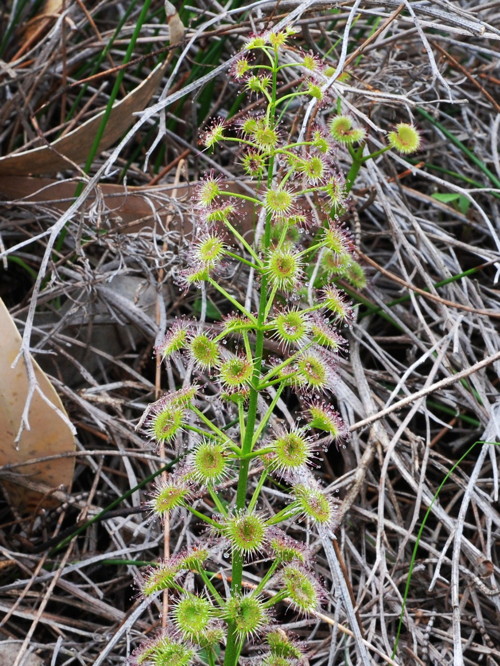
Drosera porrecta. Photo © Richard Nunn.
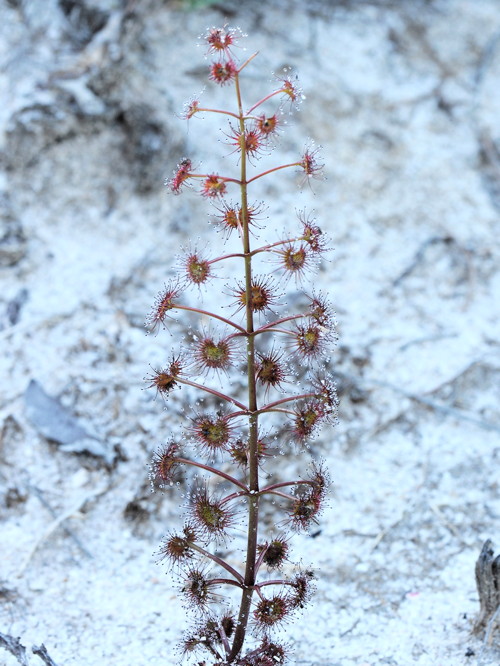
Drosera porrecta. Photo © Richard Nunn.
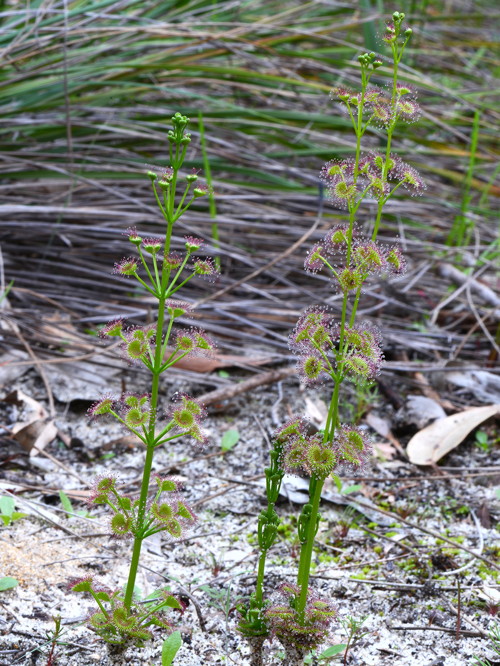
Drosera porrecta. Photo © Richard Nunn.
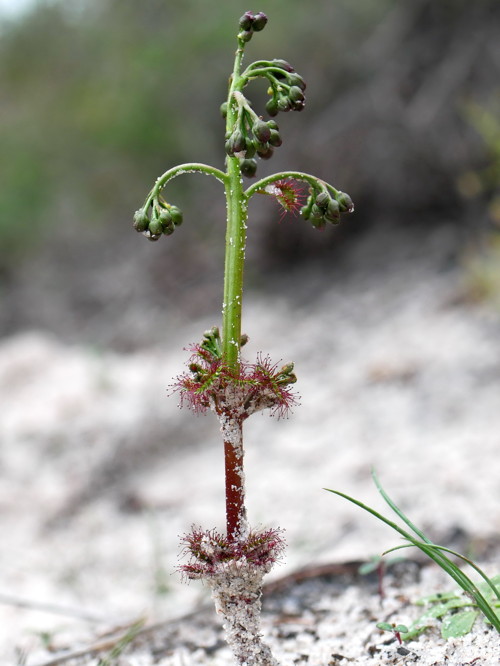
Drosera porrecta. Photo © Thilo Krueger.
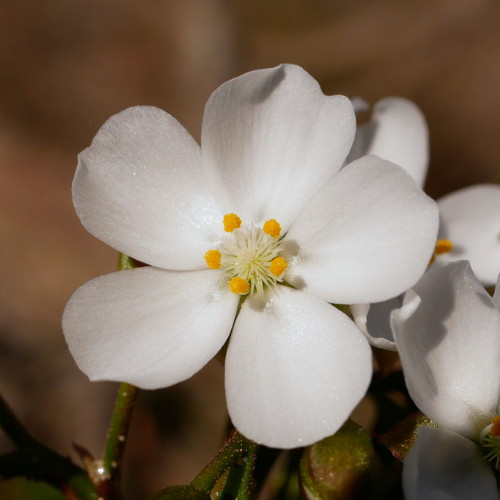
Drosera porrecta. Photo © Thilo Krueger.
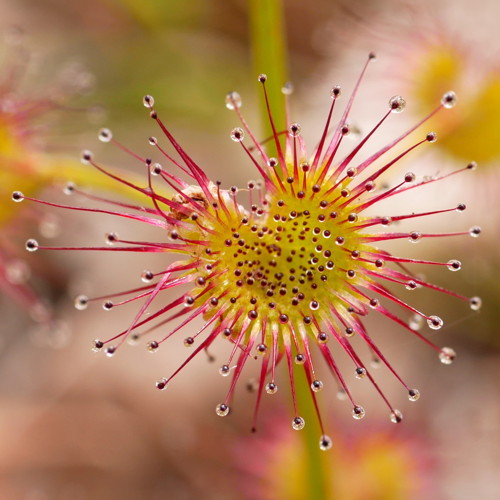
Drosera porrecta. Photo © Thilo Krueger.
Drosera praefolia Tepper
The epithet, praefolia, is from the Latin prae (before) and folia (leaves), referring to the fact that it flowers before its leaves emerge.
South Australia - along the southern Fleurieu Peninsula south of Adelaide, and Kangaroo Island.
The species generally grows in exposed, dry sites or open woodland on loam, decomposed shale or lateritic clay sand. It flowers in moderate shade, as well as full sun, and does not need fire to trigger flowering.
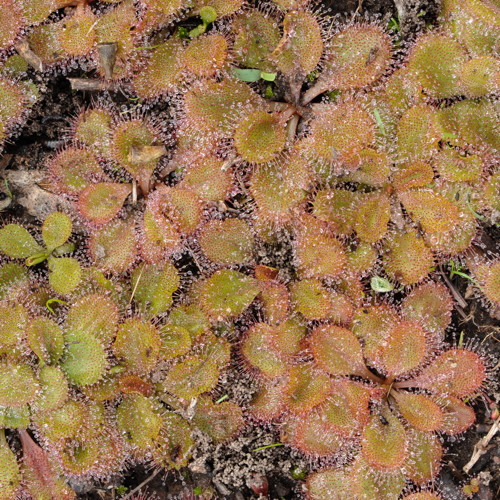
Drosera praefolia. Photo © Richard Nunn.
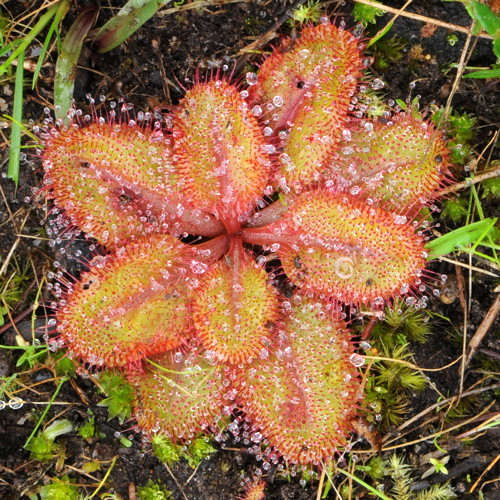
Drosera praefolia. Photo © Richard Nunn.
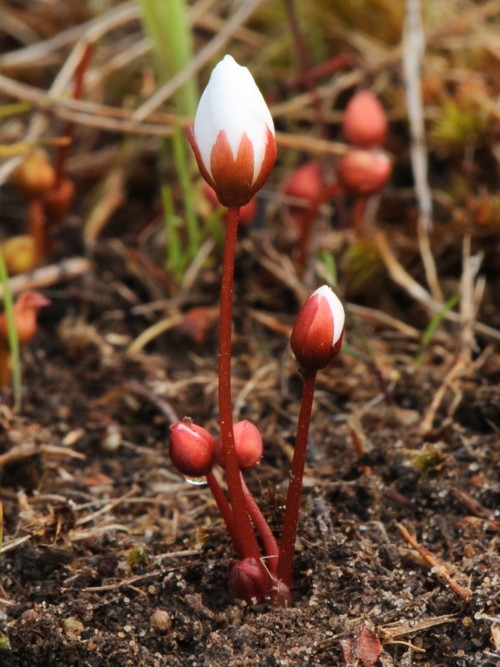
Drosera praefolia. Photo © Richard Nunn.
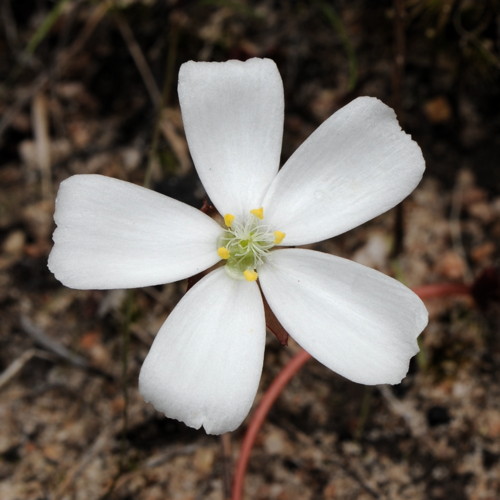
Drosera praefolia. Photo © Richard Nunn.
Drosera prophylla (Marchant & Lowrie) Lowrie
The epithet, prophylla, is derived from the Latin prophyll (bract), in reference to the numerous bracts on the lower part of the stem.
Western Australia – Cataby; Badgingarra; Coomallo.
Grows in laterite-silica sand soils, only on hilltops in open ground on heathland.
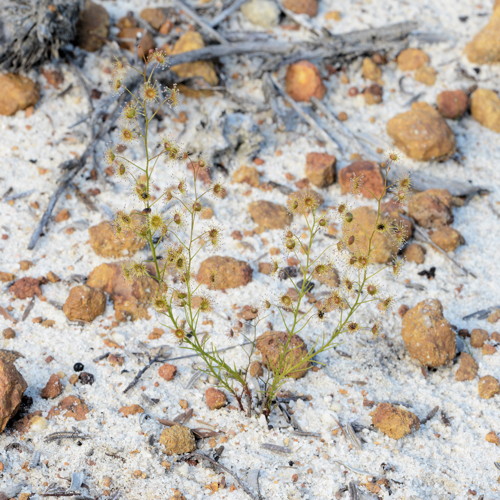
Drosera prophylla. Photo © Richard Nunn.
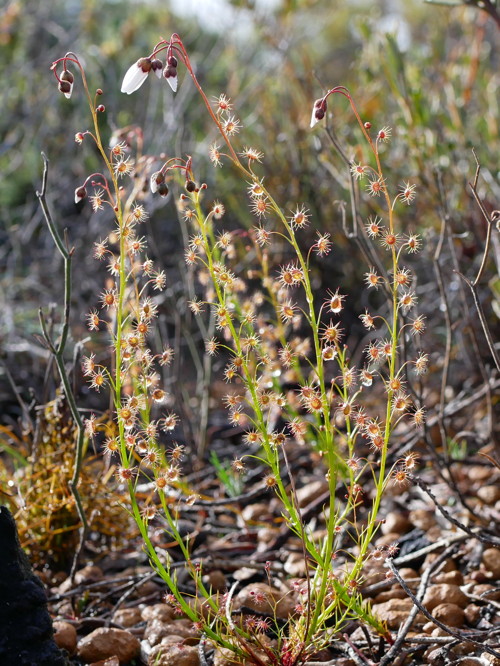
Drosera prophylla. Photo © Thilo Krueger.
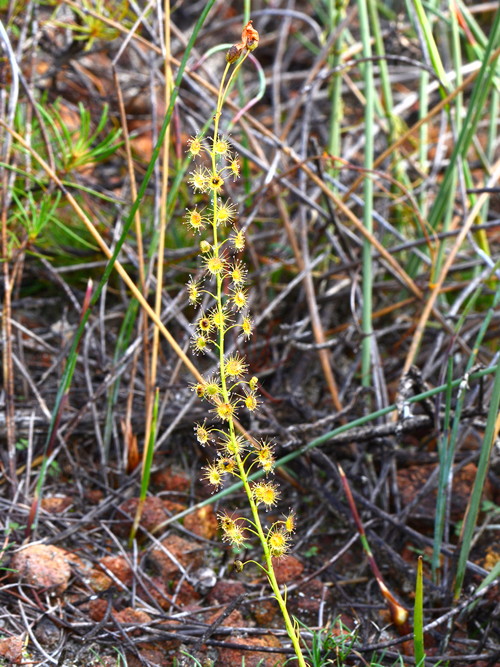
Drosera prophylla. Photo © Richard Nunn.
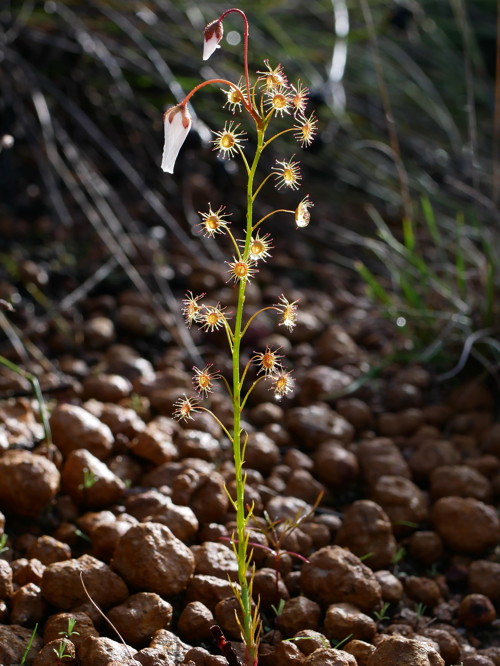
Drosera prophylla. Photo © Thilo Krueger.
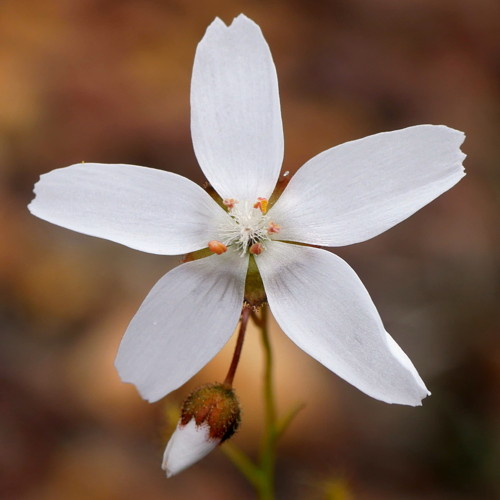
Drosera prophylla. Photo © Thilo Krueger.
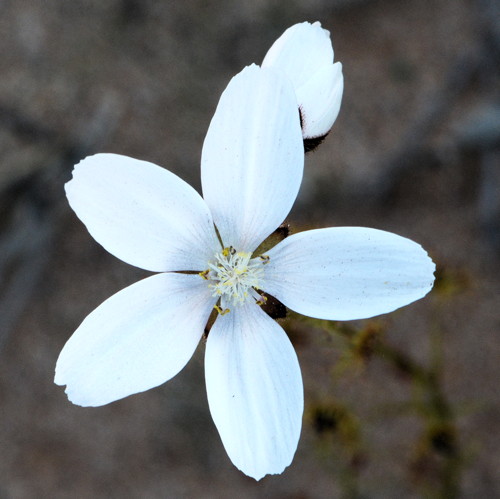
Drosera prophylla. Photo © Richard Nunn.
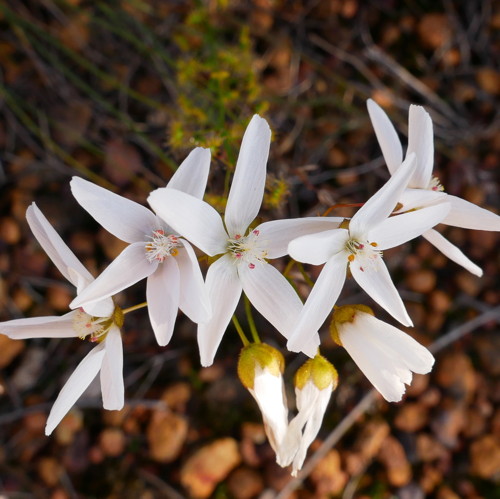
Drosera prophylla. Photo © Thilo Krueger.
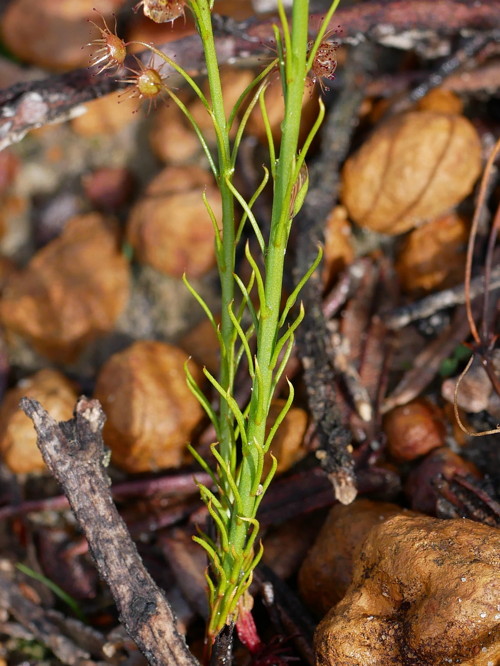
Drosera prophylla. Photo © Thilo Krueger.
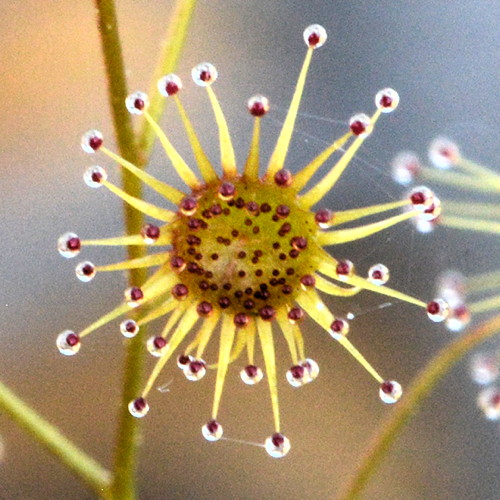
Drosera prophylla. Photo © Richard Nunn.
Drosera prostrata (N.G.Marchant & Lowrie) Lowrie
The epithet, prostrata, is from the Latin prostratus (prostrate), and refers to the prostrate growth habit of the lateral, leafy major axes.
Western Australia – known to extend from the Tamala Station area (near Shark Bay), in the north, southwards throughout the Zuytdorf Nature Reserve and the Kalbarri National Park over a distance of about 130 km; extending further south about 50 km further to near Binnu. Its growing range, though ca. 180 km long from north to south, appears to be confined to a narrow strip of land from the west to the east, within about 50 km of the coast.
Grows in yellow sand, or yellow sand mixed with a little white sand and red sand, amongst low shrubs in heathland on the northern sand plains.
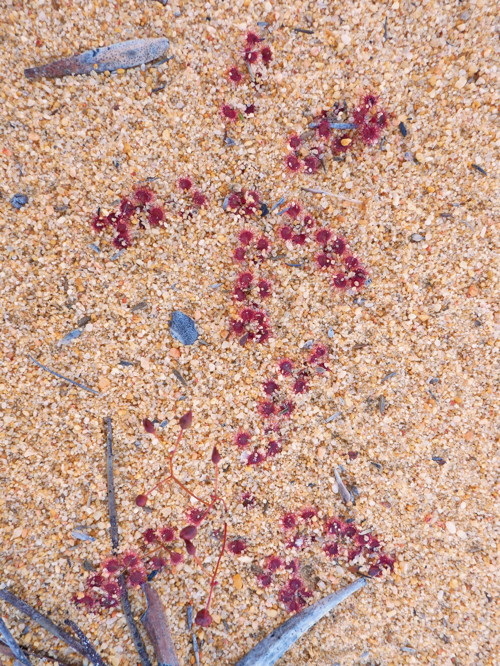
Drosera prostrata. Photo © Thilo Krueger.
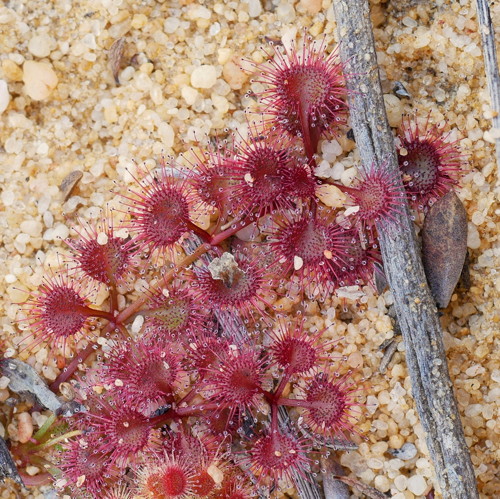
Drosera prostrata. Photo © Thilo Krueger.
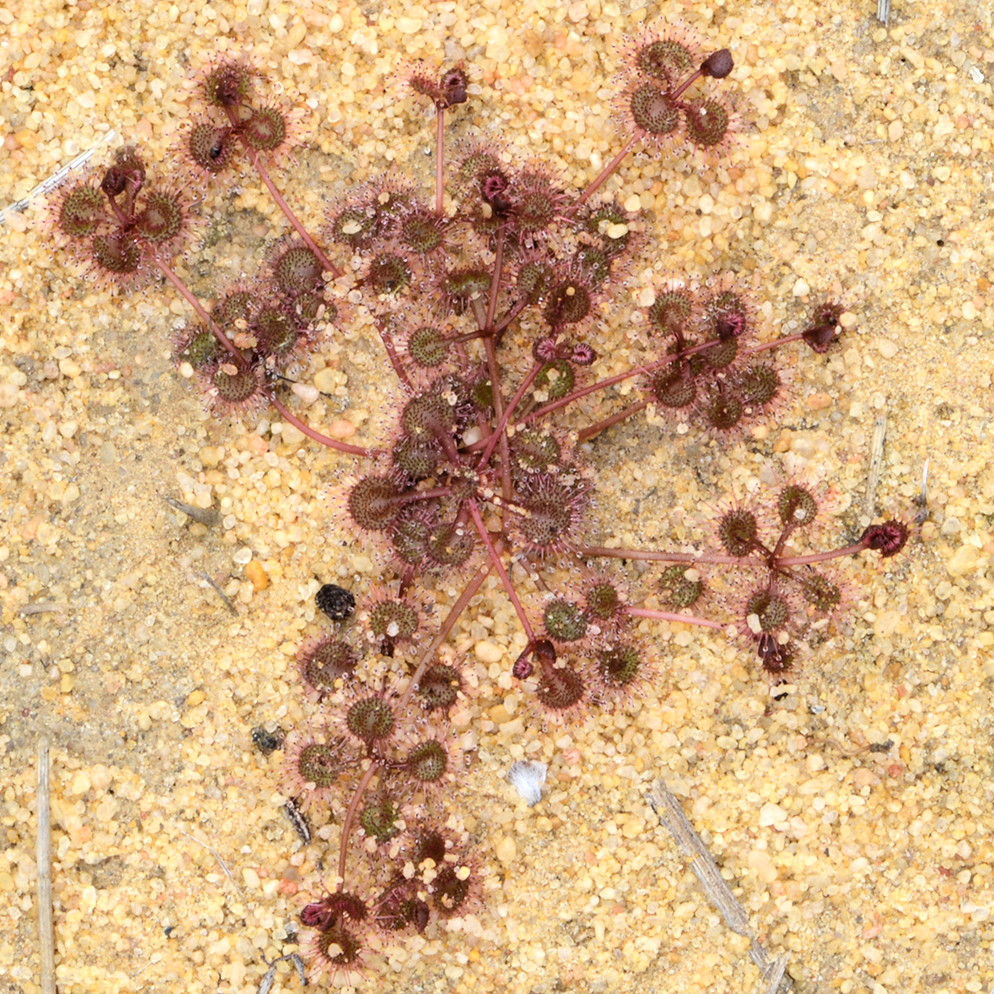
Drosera prostrata. Photo © Richard Nunn.
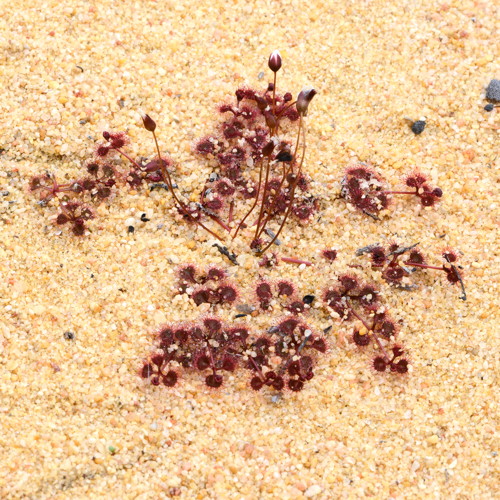
Drosera prostrata. Photo © Richard Nunn.
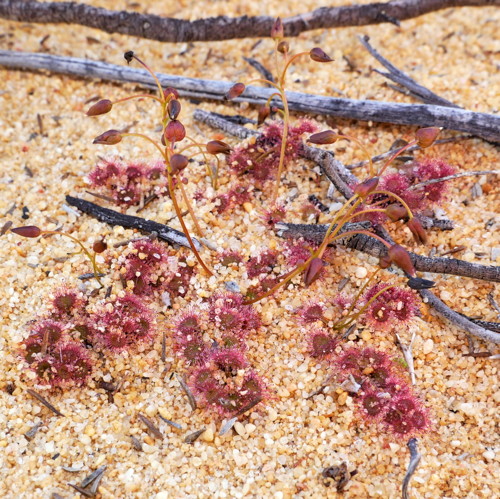
Drosera prostrata. Photo © Thilo Krueger.
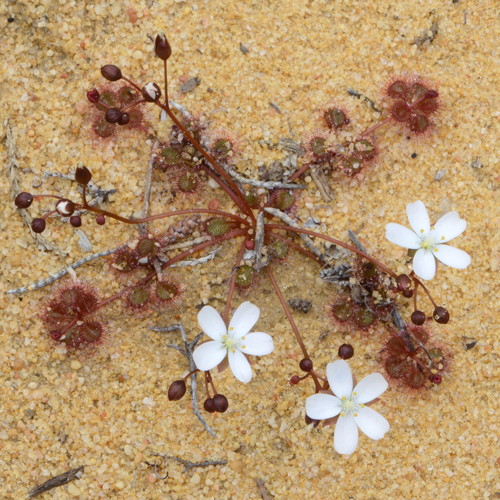
Drosera prostrata. Photo © Richard Nunn.
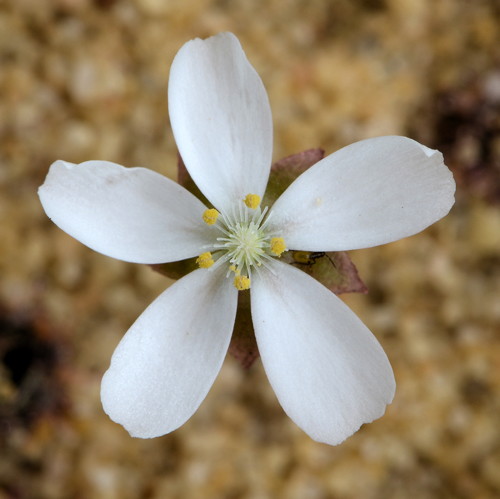
Drosera prostrata. Photo © Richard Nunn.
Drosera prostratoscaposa Lowrie & Carlquist
The epithet, prostratoscaposa, is derived from the Latin prostratus (lying along the ground) and scapus (flower stalk), in reference to its peduncle and rachis, which come to lie prostrate to the soil surface, where the fruit matures and releases its seed.
Western Australia – Coastal areas between Hopetoun and Bremer Bay.
Grows in fine-grained black sand on creek margin flats, as well as a mixture of sand and laterite with a small amount of quartzite rock floaters, generally on lower scree slopes a short distance away from winter-wet creek margins. All locations dry out completely by summer.
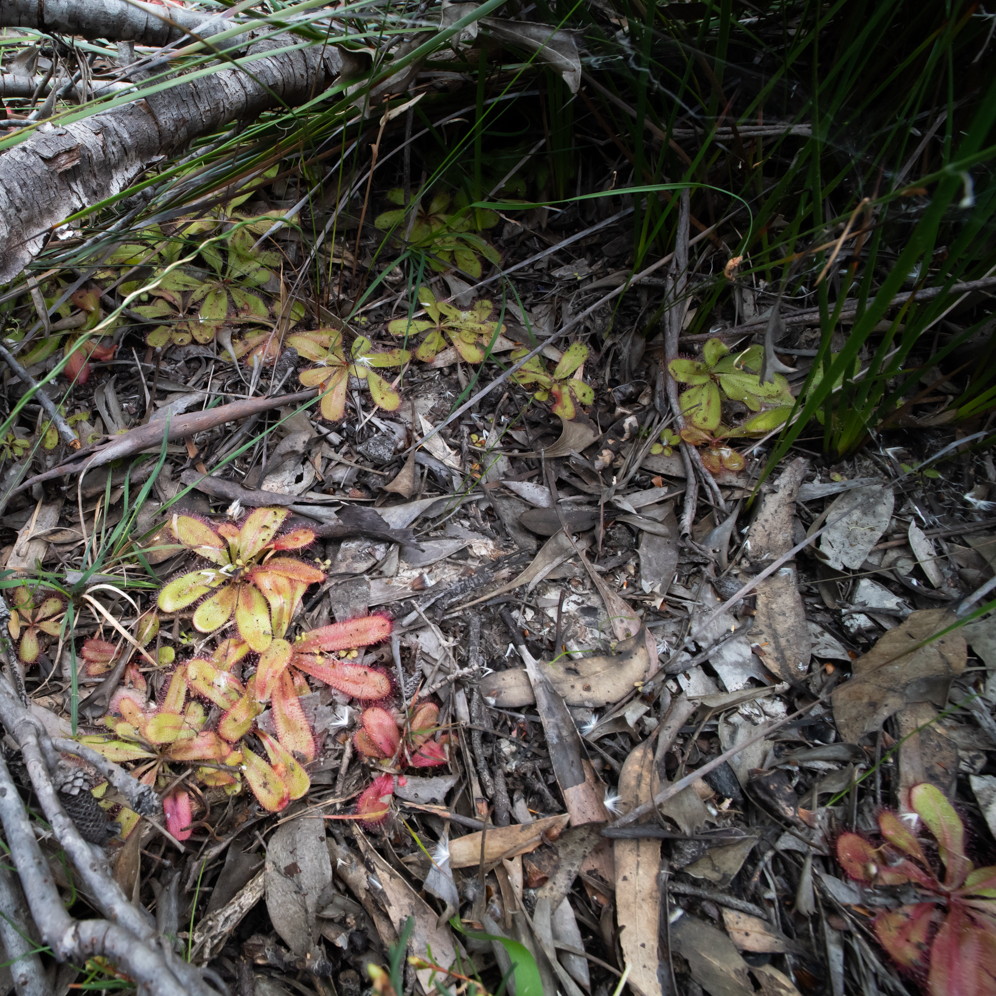
Drosera prostratoscaposa. Photo © Boaz Ng.
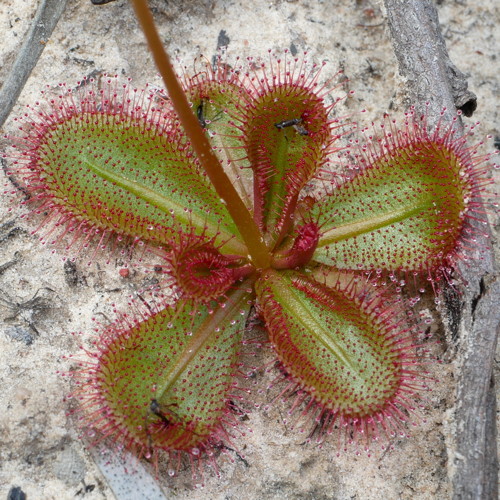
Drosera prostratoscaposa. Photo © Thilo Krueger.
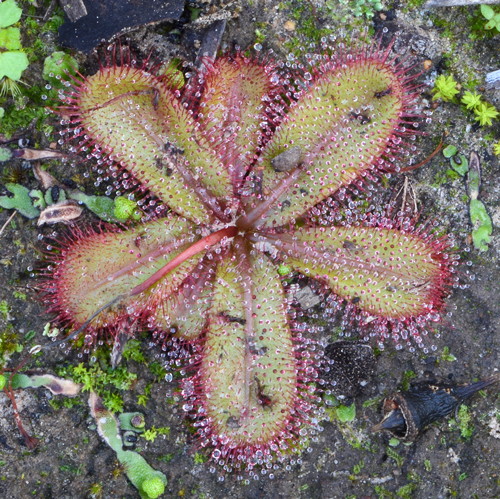
Drosera prostratoscaposa. Photo © Richard Nunn.
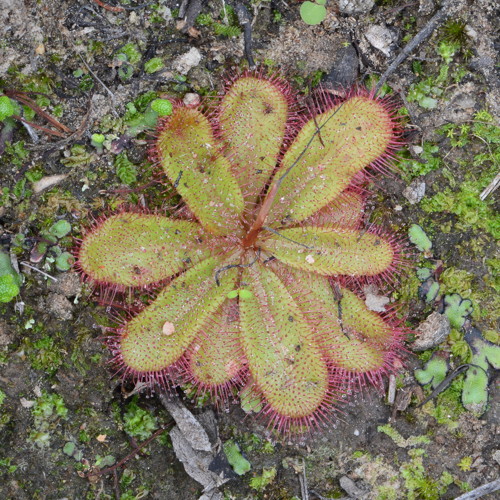
Drosera prostratoscaposa. Photo © Richard Nunn.
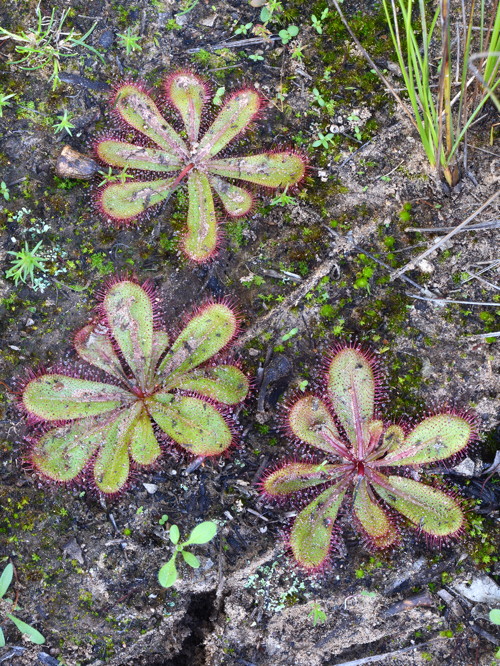
Drosera prostratoscaposa. Photo © Richard Nunn.
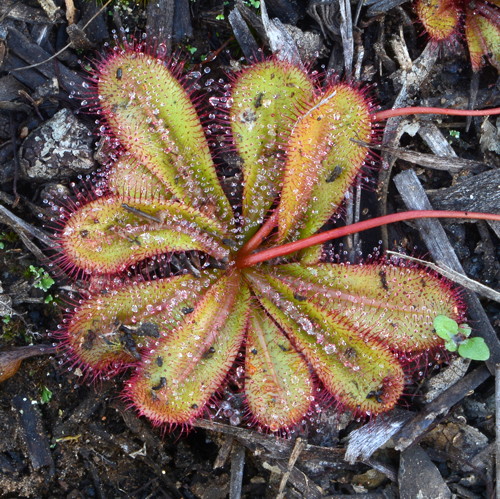
Drosera prostratoscaposa. Photo © Richard Nunn.
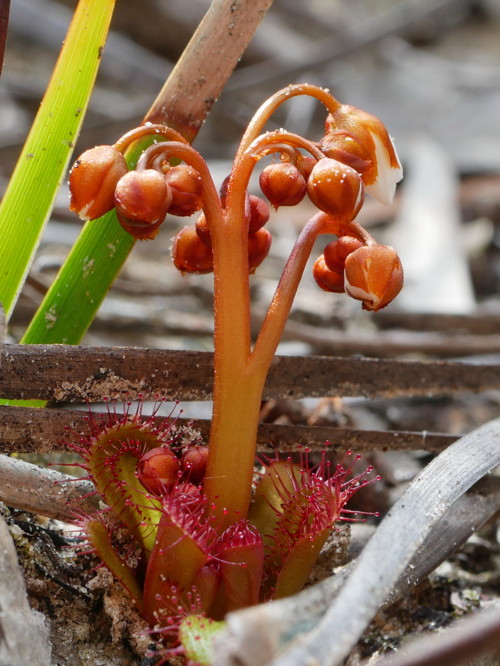
Drosera prostratoscaposa. Photo © Thilo Krueger.
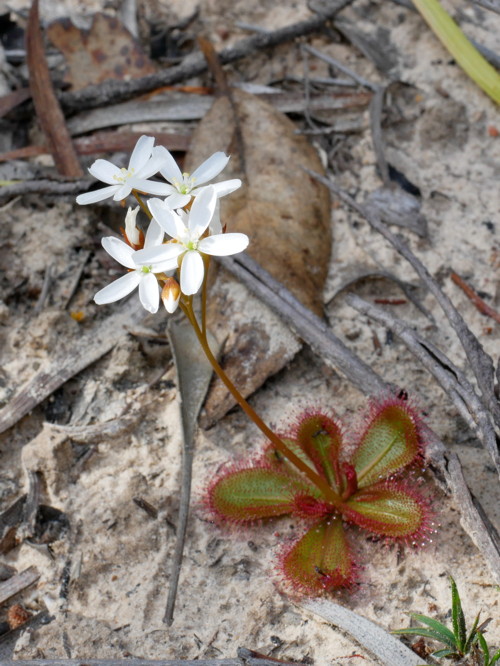
Drosera prostratoscaposa. Photo © Thilo Krueger.
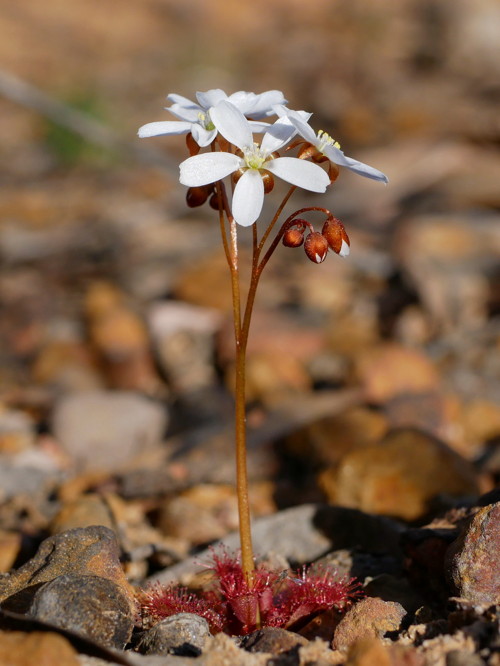
Drosera prostratoscaposa. Photo © Thilo Krueger.
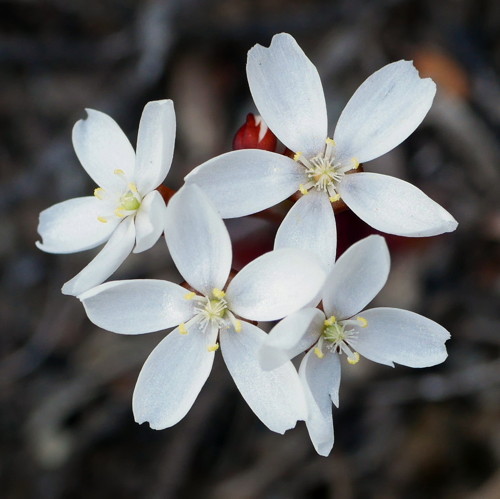
Drosera prostratoscaposa. Photo © Thilo Krueger.
Drosera purpurascens Schlotth.
From the Latin purpurascens (purplish, becoming purple), in reference to the appearance of the glandular hairs on herbarium specimens, which in the living state at maturity are reddish.
Western Australia – extends from Mt Cooke area to Katanning and from Ongerup to the Denmark-Albany region.
Grows in sand-laterite soils on heathland, and in stony, sandy clay soils in Eucalyptus woodlands.
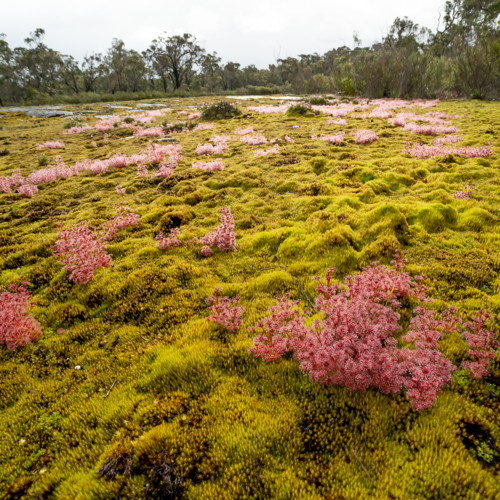
Drosera purpurascens. Photo © Boaz Ng.
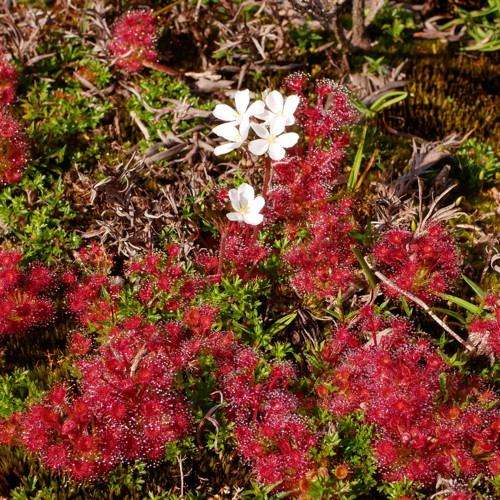
Drosera purpurascens. Photo © Thilo Krueger.
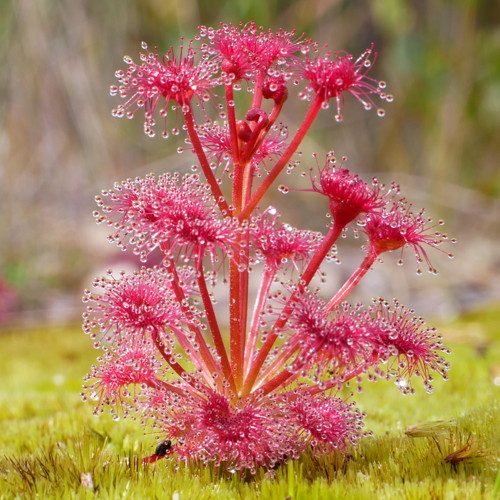
Drosera purpurascens. Photo © Thilo Krueger.
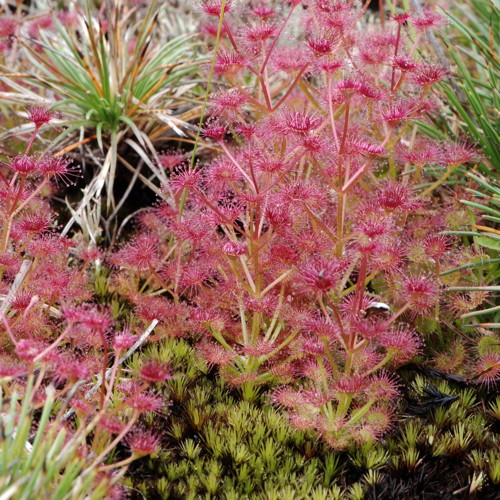
Drosera purpurascens. Photo © Richard Nunn.
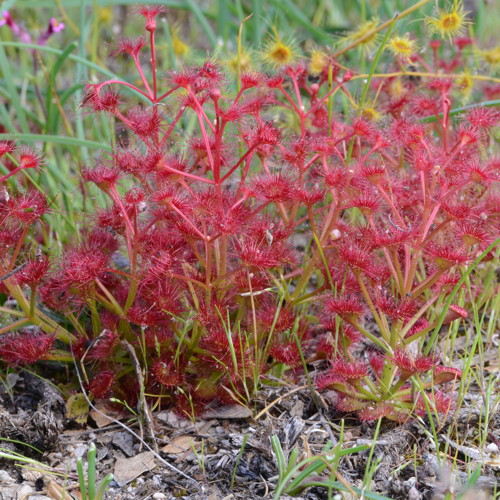
Drosera purpurascens. Photo © Richard Nunn.
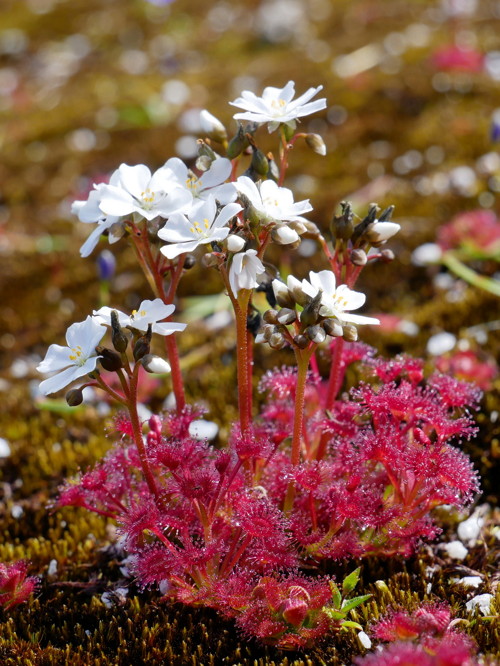
Drosera purpurascens. Photo © Thilo Krueger.
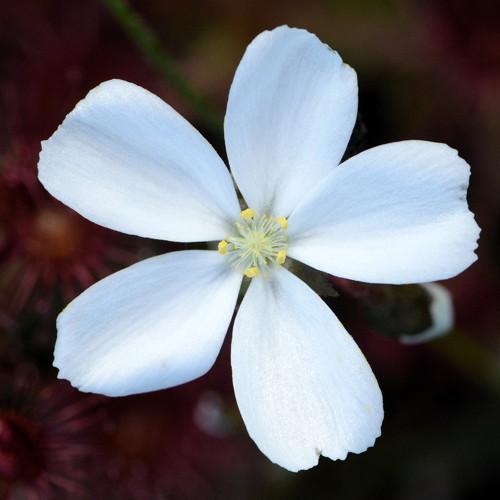
Drosera purpurascens. Photo © Richard Nunn.
Drosera radicans N.G.Marchant
The epithet, radicans, is derived from the Latin radix (radicant, having rooting stems), in reference to the tuber producing dropper roots, which are produced from auxiliary swellings in the axils of the leaves.
Western Australia – between Northampton and Kalbarri.
Grows in sandy clay or deep sand on wet, gently sloping ground.
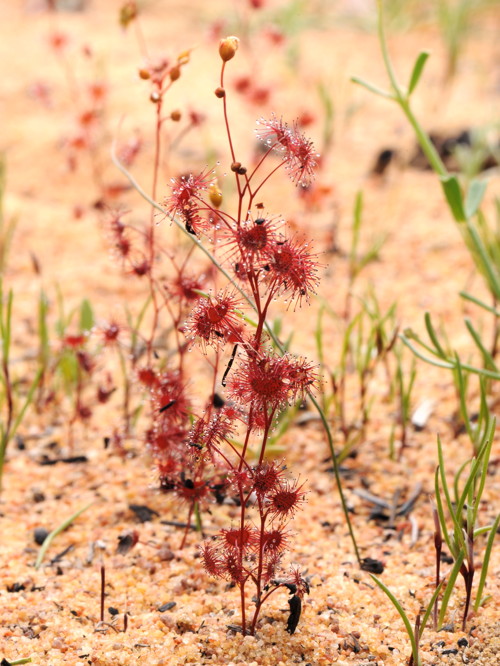
Drosera radicans. Photo © Richard Nunn.
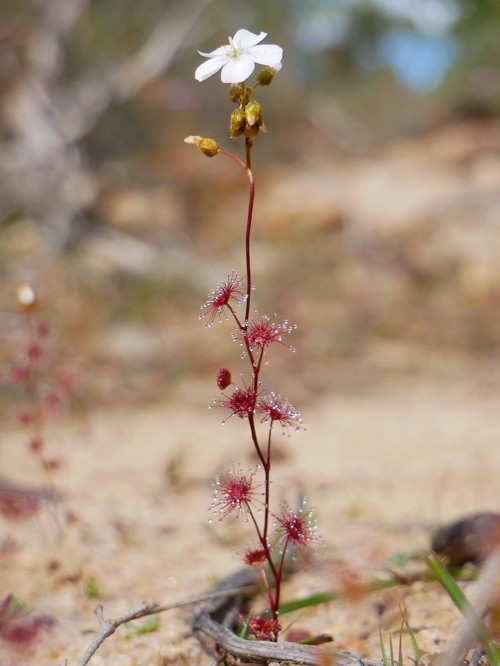
Drosera radicans. Photo © Thilo Krueger.
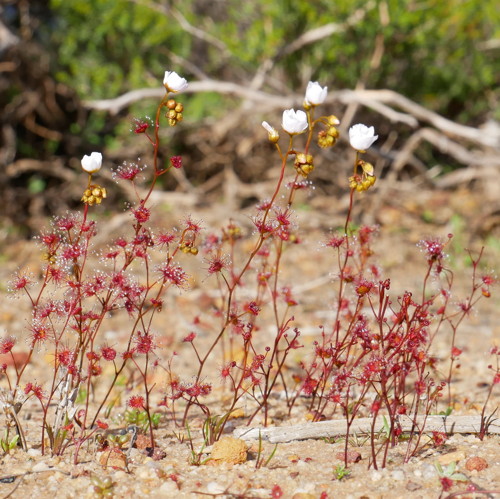
Drosera radicans. Photo © Thilo Krueger.
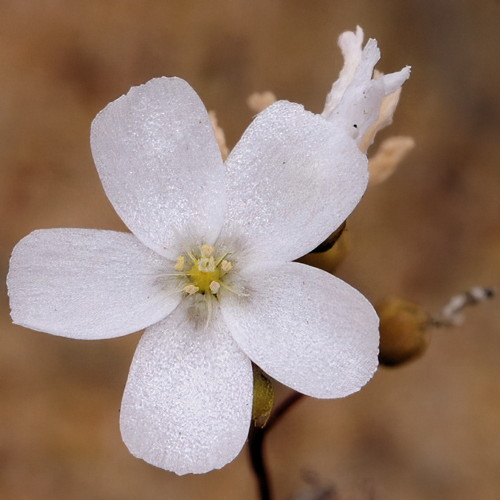
Drosera radicans. Photo © Richard Nunn.
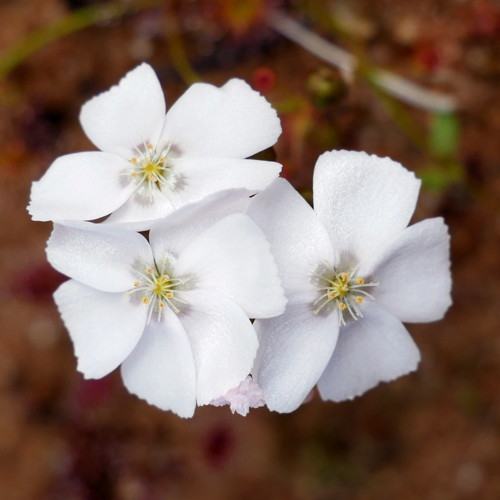
Drosera radicans. Photo © Thilo Krueger.
